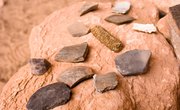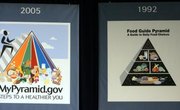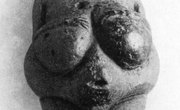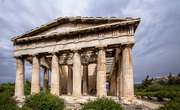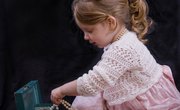Archaeology projects can lift history out of a book and let students touch the past with their own two hands. Archaeology for kids supplements the existing social studies curriculum and teaches critical thinking and cultural analysis skills that will serve students long after most the dates are forgotten. Use activities and field trips to help students apply classroom teaching to hands-on projects.
Treasure Hunt
A simulated dig site helps students experience the proper process for the discovery of artifacts. Simulate this lesson by emphasizing proper digging techniques, care of artifacts and record keeping. Students can use clues to draw conclusions about what each piece tells about the culture that left it behind. Teachers can set up layered digs in a sandbox, old bathtub or large appliance box. Use artifacts that reflect the culture and time period the class is studying. When space is limited, create a smaller dig in a plastic storage container. For a day outing, mark off a section of beach or a park and bury artifacts for students to find and record. Be sure to seek permission from local authorities, in advance of your dig.
Pottery Puzzle
Archaeologists often find shards of broken pottery they must piece together to determine the shape and potential use of the object. Challenge students to solve such archaeological puzzles. Gather several old clay flower pots and containers of different shapes. Carefully smash them and bury the pieces in a simulated dig site. You may leave out some pieces to show how difficult it is for archaeologists to find a completely intact artifact. As the pieces turn up, students try to reassemble the objects using white glue. Arrange a field trip to a real archaeological site to test the children's digging skills under the supervision of professionals.
Reading Landscape
Students learn to think like an archaeologist by studying the landscape and deducing what it suggests about where past residents may have conducted daily activities, such as gathering food and water. It's important for them to observe changes in the landscape and other environmental factors such as water sources, depressions or valleys and vegetation. Map the site and formulate some hypotheses about what ancient residents ate, where they lived, whether it was a farming culture or hunter-gatherer culture, where children played and where the trash dump would have been located. Then, make some educated guesses about what kind of artifacts you might expect to find.
Trash Detectives
Archaeologists can learn a lot about a culture from what inhabitants tossed in the garbage. For instance, by looking in your family’s trash can, the empty can of sauce can tell someone you had spaghetti for dinner last night. Ancient trash tells a story about how the people of that time lived. Have students research how earlier civilizations disposed of unwanted items and create a picture illustrating the method.
Related Articles
References
Writer Bio
Tamara Christine has written more than 900 articles for a variety of clients since 2010. She holds a Bachelor of Arts in applied linguistics and an elementary teaching license. Additionally, she completed a course in digital journalism in 2014. She has more than 10 years experience teaching and gardening.



